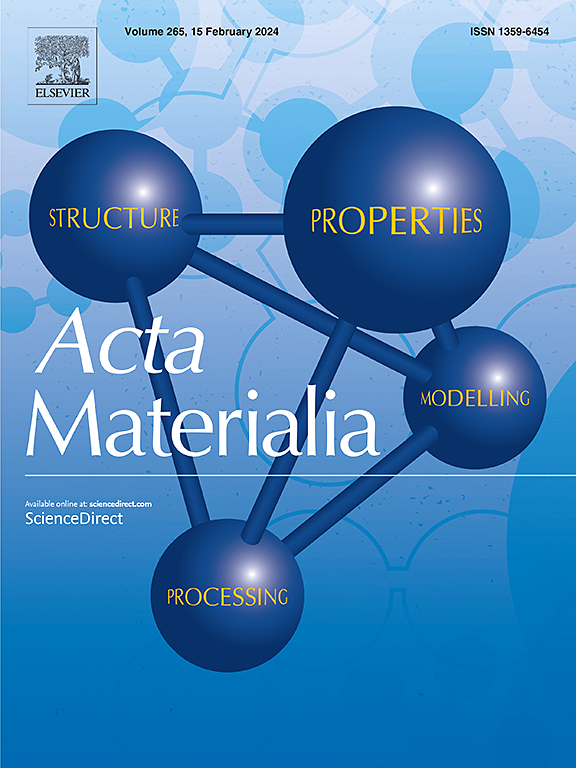Periodic laser surface texturing limits hydrogen ingress in Fe-Cr alloy
IF 9.3
1区 材料科学
Q1 MATERIALS SCIENCE, MULTIDISCIPLINARY
引用次数: 0
Abstract
The increasing use of hydrogen as an energy carrier necessitates ensuring the mechanical integrity of systems exposed to hydrogenated environments. In this context, surface engineering is crucial for reducing hydrogen ingress into metallic materials. This study explores the use of ultrafast laser texturing on a Fe-Cr alloy to create hydrogen-resistant surfaces. Two distinct laser-induced periodic surface structures (LIPSS) were performed: low spatial frequency laser texturing (LSFL) and high spatial frequency laser texturing (HSFL). Hydrogen uptake was evaluated through electrochemical permeation on the textured surfaces and compared to a mirror-like (Mirror) surface. Results showed significant reduction in hydrogen subsurface concentration by 89% for LSFL and 95% for HSFL, highlighting the potential of this technology for developing hydrogen-resistant surfaces. To further elucidate the mechanisms, this study decoupled the effects of oxide layers, surface topography, and subsurface defects on hydrogen uptake. Experimental investigations using X-ray Photoelectron Spectroscopy (XPS) and Transmission Electron Microscopy (TEM) revealed that the ultra-thin oxide layer formed during laser texturing plays a pivotal role in mitigating hydrogen absorption. The impact of surface topography was investigated using Atomic Force Microscopy (AFM). It appears that high skewness and kurtosis reduce hydrogen permeation by 40% in HSFL compared to LSFL topography. These findings underscore the effectiveness of ultrafast laser texturing in controlling hydrogen uptake in Fe-Cr alloys, with potential implications for enhancing the durability and performance of industrial materials.


周期性激光表面织构限制了Fe-Cr合金中氢的进入
越来越多地使用氢作为能量载体,必须确保暴露在氢化环境中的系统的机械完整性。在这种情况下,表面工程对于减少氢进入金属材料至关重要。本研究探索了在Fe-Cr合金上使用超快激光织构来创建抗氢表面。研究了两种不同的激光诱导周期表面结构(LIPSS):低空间频率激光变形(LSFL)和高空间频率激光变形(HSFL)。通过在纹理表面上的电化学渗透来评估氢的吸收率,并与镜面(Mirror)表面进行比较。结果显示,LSFL和HSFL的表面下氢浓度分别降低了89%和95%,这凸显了该技术在开发抗氢表面方面的潜力。为了进一步阐明机理,本研究解耦了氧化层、表面形貌和亚表面缺陷对氢吸收的影响。利用x射线光电子能谱(XPS)和透射电子显微镜(TEM)的实验研究表明,激光变形过程中形成的超薄氧化层在减轻氢吸收方面起着关键作用。利用原子力显微镜(AFM)研究了表面形貌的影响。高偏度和峰度似乎使HSFL的氢渗透比LSFL地形减少了40%。这些发现强调了超快激光织构在控制Fe-Cr合金吸氢方面的有效性,对提高工业材料的耐久性和性能具有潜在的意义。
本文章由计算机程序翻译,如有差异,请以英文原文为准。
求助全文
约1分钟内获得全文
求助全文
来源期刊

Acta Materialia
工程技术-材料科学:综合
CiteScore
16.10
自引率
8.50%
发文量
801
审稿时长
53 days
期刊介绍:
Acta Materialia serves as a platform for publishing full-length, original papers and commissioned overviews that contribute to a profound understanding of the correlation between the processing, structure, and properties of inorganic materials. The journal seeks papers with high impact potential or those that significantly propel the field forward. The scope includes the atomic and molecular arrangements, chemical and electronic structures, and microstructure of materials, focusing on their mechanical or functional behavior across all length scales, including nanostructures.
 求助内容:
求助内容: 应助结果提醒方式:
应助结果提醒方式:


